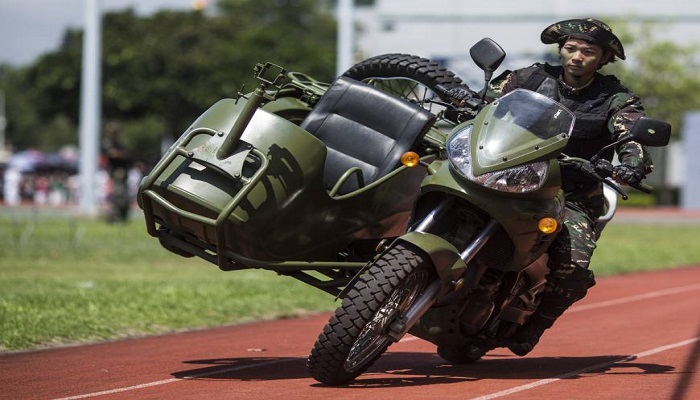
India’s armed forces will not have the upper hand if the military standoff in the Sikkim sector triggers an “armed conflict” with China, an article on the People’s Liberation Army (PLA) website warned on Tuesday.
The article, written by strategic analyst Wang Dehua, recalled the 1967 conflict in the same region and said the Chinese army had launched “two destructive” counterattacks against Indian armed forces.
“The Indian side didn’t get the upper hand in the past. And it won’t get an advantage today when the Chinese military has made remarkable progress on modernisation over the past few decades,” Wang, head of the Institute of South and Central Asia, Shanghai Institutes for International Studies, wrote in the piece titled “Expert: no winner in armed conflicts”.
The article, posted in the opinion section of China Military Online, the English news website of the PLA, reiterated the Chinese accusation that Indian troops had “illegally crossed the border” and entered Donglang or Doklam region that Beijing says is part of the Tibet Autonomous Region.
Wang wrote that “those in India who still uphold ‘confrontation’ in this event should be fully aware of the fact that if a solution isn’t reached through diplomatic or military communication or the issue isn’t handled properly, another armed conflict between China and India is not completely out of the question”.
Wang said Indians should not misjudge “India’s strength and China’s bottom line, otherwise it will shoot itself in the foot”.
He referred to the brief conflict between Chinese and Indian forces near Nathu La in the Sikkim sector in 1967.
“With the conflict at Nathula and Daggi in September and October 1967 respectively reaching a peak, when the Indian side assigned its No 112 mountain infantry brigade and No 17 artillery brigade to attack Chinese troops stationed at Nathula mountain pass on the China-Sikkim border. In self-defense, Chinese troops launched two destructive counterattacks against the Indian side,” Wang wrote.
However, it is widely accepted that Indian troops gave the Chinese a bloody nose in the clashes of 1967, killing some 300 to 400 Chinese soldiers while losing about 80 soldiers.
Wang also referenced the 1962 border conflict that ended in defeat for India, and said Indian border troops had continued to “provoke” the Chinese military after the war. He contended that China had not wanted to fight in the 1962 war, which he described as the “counterattack in self-defence”.
He wrote that “after the 1962 Counterattack in Self-Defence on China-India, Indian troops made many provocations to Chinese border troops in Yatung (a frontier county situated in the mouth of the Chumbi valley near the China-India border) and Nathula (a mountain pass in the Himalayas which connects the Indian state of Sikkim with China’s Xizang (Tibet) Autonomous Region) in 1965-1967”.
Wang said China had shown restraint by not using force to drive back Indian troops in the current standoff. “As the event fermented, many people wonder why China didn’t drive away the trespassing Indian troops by force since it was its legitimate right to build a road in its own territory,” he wrote.
“It is believed that China has exercised self-restraint because it still adheres to the long-term state policy of good-neighbourly friendliness and maintains the usual stance on handling China-India disputes.”
Wang also tacitly referred to defence minister Arun Jaitley’s recent remarks that circumstances had changed since India’s defeat in 1962.
“Some Indians dare to provoke China and even claim that it’s not 1962 anymore probably because they don’t think China has military advantages at the border sector where the event took place,” he wrote.

Post Your Comments